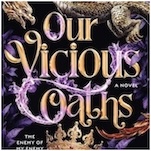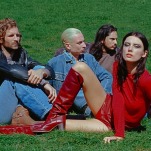Film School: True Grit
Subscriber Exclusive

Welcome to Film School! This is a column focused on movie history and all the stars, filmmakers, events, laws and, yes, movies that helped write it. Film School is a place to learn—no homework required.
Westerns never went away altogether. However, after the 1970s, for a long while, they became something of a novelty. Besides a brief uptick of popularity during the first half of the ‘90s, which yielded Dances with Wolves, Unforgiven, Tombstone and Legends of the Fall, there were years, decades even, when it appeared the genre had gone out of fashion, perhaps for good.
You could say, with sporadic exceptions, it was (forgive me) all quiet on the Western front.
Until the autumn and winter of 2007, that is. Suddenly, a new critically acclaimed Western was being released every few weeks: September had 3:10 to Yuma and The Assassination of Jesse James by the Coward Robert Ford, November had No Country for Old Men, December There Will Be Blood. It’s still not clear why many of Hollywood’s top filmmakers decided to make Westerns all at the same time—put it down to the Volcano/Dante’s Peak effect!—but after many years of dormancy, the genre was well and truly back.
It was a competitive Oscars that year, with all four of those movies gaining multiple nominations, but the Coen brothers’ No Country for Old Men came out on top.
The Coen brothers love Westerns. Even the films of theirs that don’t fit neatly within the genre often contains many of its elements; the wide open spaces, the small towns where you can’t trust anyone, the bursts of bloody violence, the erratic gangs of weirdos who could turn on you or each other at the drop of a hat. At the time of writing, their 2018 anthology The Ballad of Buster Scruggs still remains the last film the brothers directed together—and that was because they had so many ideas for Westerns, they thought it made sense to put them all in the same movie .
Whereas both Buster Scruggs and No Country for Old Men were decidedly revisionist twists on the genre, in 2010, they released their take on one of the last classics from the golden era: True Grit.
Determined to avenge the death of her father, 14-year-old Mattie Ross (Hailee Steinfeld), after some literal and figurative horse-trading, hires the meanest U.S. Marshal in all the land to track his murderer down: Rooster Cogburn (Jeff Bridges). Also along for the ride is Texas Ranger LaBoeuf (Matt Damon), who’s tracking the murderer for a different killing. Though they begin their journey sharing plenty of distrust and resentment, as they get closer to their target, they form an unlikely family.
The Coens’ version of True Grit was the second to hit big screens—the first was directed by Henry Hathaway in 1969, and starred John Wayne as Rooster, Kim Darby as Mattie and country singer Glen Campbell as La Boeuf.
While on the press tour, the Coens tended to refer to their film as another adaptation of Charles Portis’ 1968 source novel, rather than a remake of the 1969 movie. Nevertheless, both films are strikingly similar. They both take much of their dialogue straight from Portis, and they retain the main plot beats and the essential dynamics between the three main characters. If they feel different, it’s in large part just because the Bridges/Damon/Steinfeld trio are, frankly, all stronger actors than their earlier counterparts (Campbell later joked, “I’d never acted in a movie before, and every time I see True Grit, I think my record’s still clean!”). Even when they diverged from Portis, the movies often went the same way—in the novel, Rooster is described as being in his 40s, whereas Wayne and Bridges were in their early 60s.
There are a few structural differences, however. The first film has a prologue in which we see the events that lead to Mattie’s father getting killed; the second dispatches with that in a brief voiceover, and adds an epilogue where Mattie looks back on the events from her childhood as a 40-year-old woman. The epilogue was taken from the Portis novel, and chimes with the brothers’ aim of shooting a faithful adaptation.
-

-

-

-

-

-

-

-

-

-

-

-

-

-

-

-

-

-

-

-

-

-

-

-

-

-

-

-

-

-

-

-

-

-

-

-

-

-

-

-








































